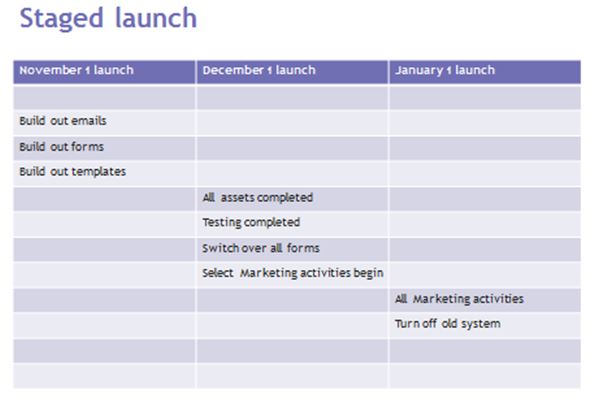It was the end of November, and I was helping a large, global client transition from their old marketing automation platform to Marketo. This involved transferring more than a hundred forms from the old to the new system.
Three days before we were due to launch the new platform, an unexpected issue arose with the forms – a big issue, which needed to be addressed before we could move forward. Unfortunately, this meant we would miss our launch deadline.
But here’s the surprising part: the client wasn’t upset. Not in the least.
Two Months Earlier
Two months before our projected launch date, I was on a call with an executive at my client’s company. “We’re turning off the old system on December 31st,” he told me, “so we need to be completely off our previous marketing automation platform by that date.”
Then he dropped the question: “So, when should we launch Marketo?”
This is often the “make or break” question when it comes to implementing marketing automation. Then answer defines the next few months of my team’s life, the client’s life, and ultimately the project’s success.
So what went through my mind?
I thought of all of the “rocky” go-lives I’d witnessed or heard about – usually caused by some unforeseen issue, which jeopardizes the hard deadline, and ultimately prevents timely implementation of the new system. Testing goes a long way toward a successful go-live , of course. Still, I still had no idea what risks would be lurking right before the launch date, which could easily become a mad scramble to address last-minute fiascoes.
“Let’s launch three times,” I heard myself say.
The Plan
Here was my plan: we would launch in three stages. Instead of trying to anticipate every risk before the final launch, we would give ourselves padding, and invite any unforeseen problems to present themselves beforehand.
We would push hard for the first two launches, and make the third launch, on December 31st, a non-event.
Here is what our launch strategy looked like:
The Results
For the first launch, we built out email, forms, and templates. A lot was accomplished, and both parties felt positive about the results.
At the second launch, we switched over the forms. This brings us back to the beginning of my story – there was a last-minute issue, which prevented us from transferring the forms by December 1st. But because the final launch wasn’t until January 1st, we still had plenty of time to resolve it.
By January 1st, everything was done. No last-minute fiascoes, no unforeseen fires to put out.
If you’re thinking about using a multi-phase, “soft launch” approach to your marketing automation implementation, here are some tips I’d recommend:
- Organize your project plan by phases
- Push everything you can to the first two launches – ideally, you’ll have nothing left to do by the third launch
- Adjust your time-frames to fit your need – we chose to separate phases by months, but this can be flexible
If you’ve recently added a new tool (marketing automation or otherwise), what are your thoughts about multi-phased deadlines? Would you consider a “soft launch” the next time you implement a new solution? Share your thoughts in the comments below.

